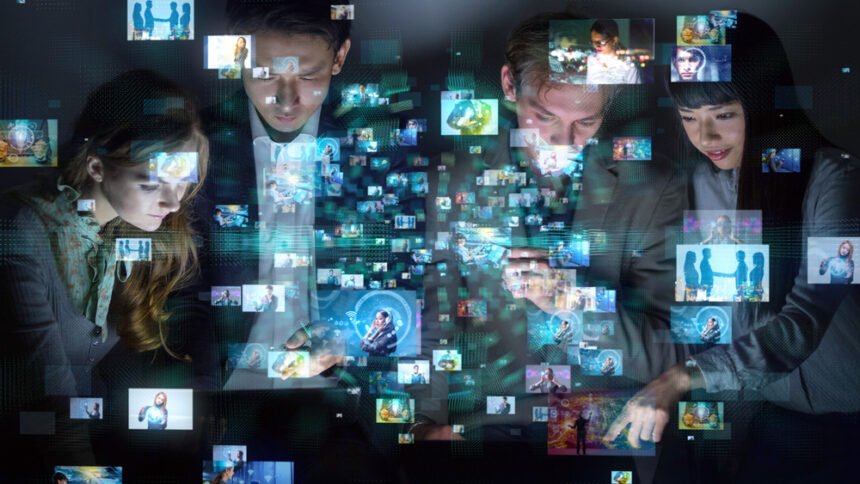Artificial intelligence has become very important in modern digital and traditional media. There are a number of different types of AI applications in conventional media. One of the biggest trends has been the inception of social TV.
The Evolving Role of AI on Social TV
The increase of social media has made TV more entertaining and engaging. It has become even more engaging as AI has become more dominant with social media and television alike. We have mentioned the benefits of big data and AI on social media marketing, but the benefits go far beyond that.
Our friends share the newest trends and views about current TV series they watch on TV using providers like RCN cable along with the limitless number of hashtags and tweets that provide us live information on current events associated with the upcoming programs.
In addition, it seems that the frequency of online chatting, powered by specialized influencers, has dramatically grown. AI developments have been particularly important. These new advances in AI appear to have launched a new multi-screen phenomenon, or “social television,” which is a combined watching of television in concurrence to the use of social media chat programs. This rapid increase in social television has posed several problems for advertising marketers today. Let’s see how social television works and what sort of impact it has, overall.
What Exactly is Social TV?
Everything regarding real-time communication while a television show is being aired on TV falls into the category of social television. Shows on IPTV or TV promote interaction with the public so that TV and social connectivity are combined. TV is an interactive concept underlying this technology. It allows the viewer to participate actively in live television. You can chat and engage on your TV sets like you can on your PCs and laptops. Although this degree of involvement is not practiced so far, any social media contact with a TV show is also regarded as social TV. Marketers can take advantage of this and learn about their audience’s interests.
Data analytics and AI tools have made tracking users much easier than ever. As a 2018 article on TVTech pointed out, AI has become very important in television broadcasting. However, it has been even more important behind the scenes in other ways.
Why Social Demonstrations are of Interest to Advertisers
TV shows with a high volume of online participation have a committed spectator. This indicates that these viewers are more prone to see numerous episodes live, without changing channels during advertisements. Online talk of a show may involve viewers and increase their commitment to the show, which in turn can boost the efficiency of future commercial advertising. It can be even easier to use this data to monetize future commercials if AI tools are used to monitor information carefully.
Social programs can help marketers since multitasking social media while watching TV reduces the capacity to reject attempted persuasion and increases therefore ad efficacy.
Spectators talking about television programs may also respond positively to online advertising, an action that promotes awareness of the media gained for the advertised brand. This gives marketers an efficient advertising gauge in real-time.
Does the Halo Effect Increase the Efficiency of Your Ad and Can AI Play a Role?
The beneficial impact of social events with program participation is divided by the halo effect. The highly interested audiences that follow social TV are known to have enhanced cognitive excitement and attentiveness throughout the broadcast.
The mechanism of the halo effect influences your capacity and motivation to process advertising through this shift in cognitive state.
We found that increased attention and participation in programs is related to enhanced advertising reminders, improved publicity attitudes, less ad-skipping, and an increased buying intent.
AI can be very important in this regard. You may find that you will be able to use AI tools to improve the positioning of your content to help make the halo effect more visible.
Emotional Importance
Research has demonstrated that particular ad features can improve viewer attention and motivation in ad information processing. Given that social events tap into different emotions, we may split advertising into two ad groups: affective ads and informative ads because of the emotional element of the advertisement.
Affective announcements that are often emotive or hilarious are seen as more engaging, capture the attention of viewers more successfully, and minimize ad-skipping. If the amount of social engagement is high, they also boost instant internet traffic. It is caused by the ability of affective advertising to catch the attention of viewers from the TV show and allow their participation to spread to the ad-processing industry. Affective advertisements are known to activate rapid e-commerce when they appear while social shows are broadcast.
Informative advertising, on the other hand, influences ad processing to the contrary. Advertising tends to differ from hedonic visualization and reduces the capacity of viewers to comprehend ad content.
Therefore, AI can be important when it comes to processing ads more efficiently and ensuring they comply with your customers’ expectations. You can use AI to get a better handle on customers and optimize the ads with this in mind.
How can AI be helpful in this regard? One AI platform was able to look at 600 hours of video and identify clearly visible human emotions.
Conditions of Limitation
Social show advertising may be a wonderful technique to boost quick buying online since social shows provide more active viewers.
Given that online engagement with the program might reduce ad mood influence on online buying, we recommend more effective advertisements to increase ad performance when engagement is high with the program. This being stated, businesses wishing to take full advantage of social events should air advertising, not logical or instructive advertisements.
What is the Future of Social TV Driven by AI?
The potential of social TV is enormous. Many have already started to focus on user-generated material in the entertainment business. Automation technologies will make it easier than ever to deliver a customized TV viewing experience.
AI technology is going to be more important than ever. It is still early to tell, but we will likely discover that new advances in AI are going to lead to some tremendous benefits in the future.
An analytical database may contain all the material generated via interaction. Imagine what advertising and marketers may do with all that information!








